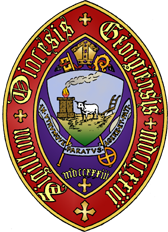 Missionary work resulted in sustained growth of the Episcopal Church in Georgia in the decades following the American Civil War. During Bishop John Beckwith’s 23 years as Bishop of Georgia, he averaged a little more than one new congregation every year as he added 22 congregations and five missions. Realizing that the state of Georgia was too big for one person to handle alone, Beckwith made administrative changes to enable the expansion. At the Diocesan Convention of 1870, a new canon was adopted which established four missionary districts. This relieved the Bishop of the sole responsibility for stimulating, establishing, and maintaining new missions.
Missionary work resulted in sustained growth of the Episcopal Church in Georgia in the decades following the American Civil War. During Bishop John Beckwith’s 23 years as Bishop of Georgia, he averaged a little more than one new congregation every year as he added 22 congregations and five missions. Realizing that the state of Georgia was too big for one person to handle alone, Beckwith made administrative changes to enable the expansion. At the Diocesan Convention of 1870, a new canon was adopted which established four missionary districts. This relieved the Bishop of the sole responsibility for stimulating, establishing, and maintaining new missions.
One typical example was in Hawkinsville. Dr. and Mrs. Golding were Episcopalians who moved to town in 1862. They spoke with some other families and together asked the Convocation Dean, the Rev. H.K. Rees of St. Paul’s, Macon, if he could assist. They first gathered at Wimberly’s Hall on Commerce Street. Ministers from Macon came at intervals to hold these services and a Sunday school was organized. Bishop John Beckwith was one of the first to give to your building fund. They built a 24 by 50 foot plain frame building. The chancel and vestry rooms would come later. The Rev. H.K. Rees built the altar by hand.
In January of 1872, Bishop Beckwith wrote in his journal that he gave his canonical consent to organizing the Parish of St. Luke’s, Hawkinsville adding that, “A little band of faithful churchmen…have here labored against great difficulties with unflagging zeal to form a congregation and build a church. God has blessed their efforts, and I had the privilege of ministering to them in their own neat building…. Their zeal and devotion are worthy of imitation.”
 This pattern of Episcopalians moving to town, beginning to meet on their own, and then asking for some diocesan assistance was common. Financing the missionary efforts became an ongoing problem. It was readily apparent that the parish clergy were too busy with parochial duties to give effective missionary service on a regular basis. The Diocese assigned and paid the compensation for a mission minister-in-charge for these stations. By 1880 the Diocese had established a Board of Missions with responsibility for the ambitious missionary operations. This group consisted of the Bishop, the four Deans, and four laymen who apportioned monies to “the feeble Parishes and Mission Stations.”
This pattern of Episcopalians moving to town, beginning to meet on their own, and then asking for some diocesan assistance was common. Financing the missionary efforts became an ongoing problem. It was readily apparent that the parish clergy were too busy with parochial duties to give effective missionary service on a regular basis. The Diocese assigned and paid the compensation for a mission minister-in-charge for these stations. By 1880 the Diocese had established a Board of Missions with responsibility for the ambitious missionary operations. This group consisted of the Bishop, the four Deans, and four laymen who apportioned monies to “the feeble Parishes and Mission Stations.”
By 1890, the Diocese supported eleven missionaries in addition to the Diocesan Missionary to further the work of church planting across the state. That November, Bishop Beckwith fell ill and was sick enough that he authorized the Standing Committee to act on his behalf. He died two weeks later, on November 23, at the age of 59. At that time, there were 50% more baptized members of the Episcopal Church than when he was consecrated as the second Bishop of Georgia. He and his wife, Ella, are buried in Savannah’s Bonaventure Cemetery.
